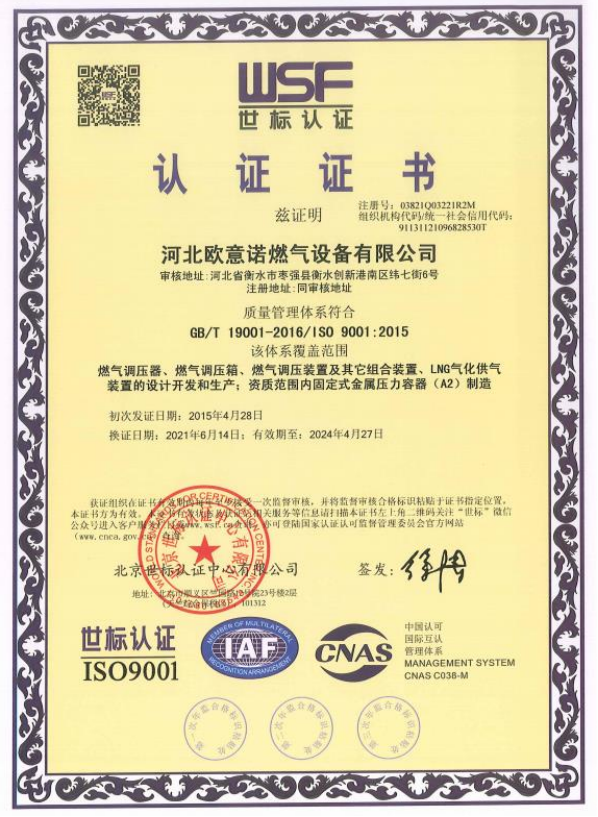
Sep . 28, 2024 00:42
Back to list
Natural Gas Pressure Regulator System Design and Optimization Techniques
Understanding the Natural Gas Pressure Regulator
Natural gas is a crucial energy source that powers homes, industries, and vehicles across the globe. To ensure its safe and efficient delivery, pressure regulators play an essential role in the natural gas distribution system. A natural gas pressure regulator is a device designed to control the pressure of gas supplied from one point to another, maintaining it at a safe and usable level for consumers.
.
Pressure regulators work on the principle of differential pressure. When gas enters the regulator, it encounters a diaphragm that responds to pressure changes. If the pressure exceeds a predetermined level, the diaphragm moves to close the gas flow, thereby reducing the downstream pressure. Conversely, when the pressure drops below the set point, the diaphragm opens the valve to allow more gas to flow through. This constant adjustment helps maintain a steady pressure in the distribution system.
منظم ضغط الغاز الطبيعي

There are various types of pressure regulators, including first-stage and second-stage regulators. First-stage regulators reduce the pipeline pressure to an intermediate level, while second-stage regulators further reduce the pressure to a level suitable for residential and commercial use. Additionally, some regulators are equipped with features such as relief valves, which ensure that excess pressure is vented safely, protecting the system from potential damage.
Regular maintenance of natural gas pressure regulators is crucial for ensuring their reliability and efficiency. Issues such as dirt accumulation, wear and tear, or mechanical failure can lead to malfunctions, resulting in inadequate gas supply or even hazardous leaks. Therefore, periodic inspections and servicing by qualified professionals are essential.
In conclusion, natural gas pressure regulators are vital components of the natural gas distribution system. They ensure that gas is delivered safely and efficiently to consumers, allowing for the safe operation of appliances and systems that rely on natural gas. As the demand for natural gas continues to rise, the importance of these regulators in maintaining safe and reliable energy supply will only grow.
Latest news
-
Safety Valve Spring-Loaded Design Overpressure ProtectionNewsJul.25,2025
-
Precision Voltage Regulator AC5 Accuracy Grade PerformanceNewsJul.25,2025
-
Natural Gas Pressure Regulating Skid Industrial Pipeline ApplicationsNewsJul.25,2025
-
Natural Gas Filter Stainless Steel Mesh Element DesignNewsJul.25,2025
-
Gas Pressure Regulator Valve Direct-Acting Spring-Loaded DesignNewsJul.25,2025
-
Decompression Equipment Multi-Stage Heat Exchange System DesignNewsJul.25,2025

